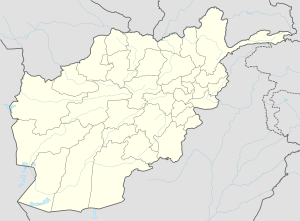피 타우리
Pi Tauri| 관측 데이터 EpochJ2000.0이쿼녹스J2000.0(ICRS) | |
|---|---|
| 별자리 | 황소자리 |
| 우측 상승 | 04h 26m 36.37093s[1] |
| 탈위임 | +14° 42′ 49.6126″[1] |
| 겉보기 크기(V) | +4.69[2] |
| 특성. | |
| 스펙트럼형 | G7 IIIa Fe-1[3] |
| U-B색지수 | +0.72[2] |
| B-V색지수 | +0.98[2] |
| 아스트로메트리 | |
| 방사 속도(Rv) | +31.4±0.3km[4]/s |
| 적정운동(μ) | RA: −9.52[1]mas/yr Dec.: −31.44[1]mas/yr |
| 시차(시차) | 7.83 ± 0.22 마스[1] |
| 거리 | 420 ± 10 리 (105 ± 4 pc) |
| 절대치수(MV) | −1.27[5] |
| 세부 사항 | |
| 미사 | 3.94[5] M☉ |
| 반지름 | 21[6] R☉ |
| 루미도 | 229[7] L☉ |
| 표면 중력(log g) | 2.54[5] cgs |
| 온도 | 5,086[7] K |
| 금속성 [Fe/H] | -0.08[5] 덱스 |
| 나이 | 17MYR[5] |
| 기타 지정 | |
| 데이터베이스 참조 | |
| 심바드 | 자료 |
피 타우리(Pi Tauri, π Tauri)는 황소자리 12궁도에 있는 홀로 있는 [9]황후 별이다.겉보기 시각적 크기가 +4.69로 육안으로 볼 수 있을 만큼 밝다.[2]비록 그것이 히아데스 성단의 별들 사이에 있는 것처럼 보이지만, 그것은 성단보다 세 배나 더 멀리 지구에서 떨어져 있는, 그 자체가 구성원이 아니다.지구에서 볼 수 있는 연간 시차 변화량 7.83 mas를 사용하여 측정한 이 별까지의 거리는 약 420광년이다.[1]그 범위에서는 항성간 먼지로 인해 0.24의 소멸계수만큼 항성의 시각적 크기가 감소한다.[5]
이것은 G7 IIIa Fe-1의 별 분류를 가진 진화된 G형 거대 항성으로, 접미사 표기법은 스펙트럼에 철이 부족함을 나타낸다.[3]측정된 각도 직경은 1.55±0.06 mas이다.[10]Pi Tauri의 추정 거리에서, 이것은 태양의 반경의 약 21배의 물리적 크기를 산출한다.[6]태양 질량의 거의[5] 4배를 보유하고 있으며 유효온도 5,086K로 태양 광도의 229배를 방사하고 있다.[7]
참조
- ^ a b c d e f van Leeuwen, F. (2007), "Validation of the new Hipparcos reduction", Astronomy and Astrophysics, 474 (2): 653–664, arXiv:0708.1752, Bibcode:2007A&A...474..653V, doi:10.1051/0004-6361:20078357, S2CID 18759600.
- ^ a b c d Argue, A. N. (1966), "UBV photometry of 550 F, G and K type stars", Monthly Notices of the Royal Astronomical Society, 133 (4): 475–493, Bibcode:1966MNRAS.133..475A, doi:10.1093/mnras/133.4.475.
- ^ a b Keenan, Philip C.; McNeil, Raymond C. (1989), "The Perkins catalog of revised MK types for the cooler stars", Astrophysical Journal Supplement Series, 71: 245, Bibcode:1989ApJS...71..245K, doi:10.1086/191373.
- ^ de Bruijne, J. H. J.; Eilers, A.-C. (October 2012), "Radial velocities for the HIPPARCOS-Gaia Hundred-Thousand-Proper-Motion project", Astronomy & Astrophysics, 546: 14, arXiv:1208.3048, Bibcode:2012A&A...546A..61D, doi:10.1051/0004-6361/201219219, S2CID 59451347, A61.
- ^ a b c d e f g Takeda, Yoichi; et al. (August 2008), "Stellar Parameters and Elemental Abundances of Late-G Giants", Publications of the Astronomical Society of Japan, 60 (4): 781–802, arXiv:0805.2434, Bibcode:2008PASJ...60..781T, doi:10.1093/pasj/60.4.781.
- ^ a b Lang, Kenneth R. (2006), Astrophysical formulae, Astronomy and astrophysics library, vol. 1 (3rd ed.), Birkhäuser, ISBN 3-540-29692-1. 반지름(R*)은 다음을 통해 제공된다.
- ^ a b c McDonald, I.; et al. (2012), "Fundamental Parameters and Infrared Excesses of Hipparcos Stars", Monthly Notices of the Royal Astronomical Society, 427 (1): 343–57, arXiv:1208.2037, Bibcode:2012MNRAS.427..343M, doi:10.1111/j.1365-2966.2012.21873.x, S2CID 118665352.
- ^ "pi Tau". SIMBAD. Centre de données astronomiques de Strasbourg. Retrieved 2017-06-30.
- ^ Eggleton, P. P.; Tokovinin, A. A. (September 2008), "A catalogue of multiplicity among bright stellar systems", Monthly Notices of the Royal Astronomical Society, 389 (2): 869–879, arXiv:0806.2878, Bibcode:2008MNRAS.389..869E, doi:10.1111/j.1365-2966.2008.13596.x, S2CID 14878976.
- ^ Richichi, A.; et al. (February 2005), "CHARM2: An updated Catalog of High Angular Resolution Measurements", Astronomy and Astrophysics, 431 (2): 773–777, Bibcode:2005A&A...431..773R, doi:10.1051/0004-6361:20042039.



